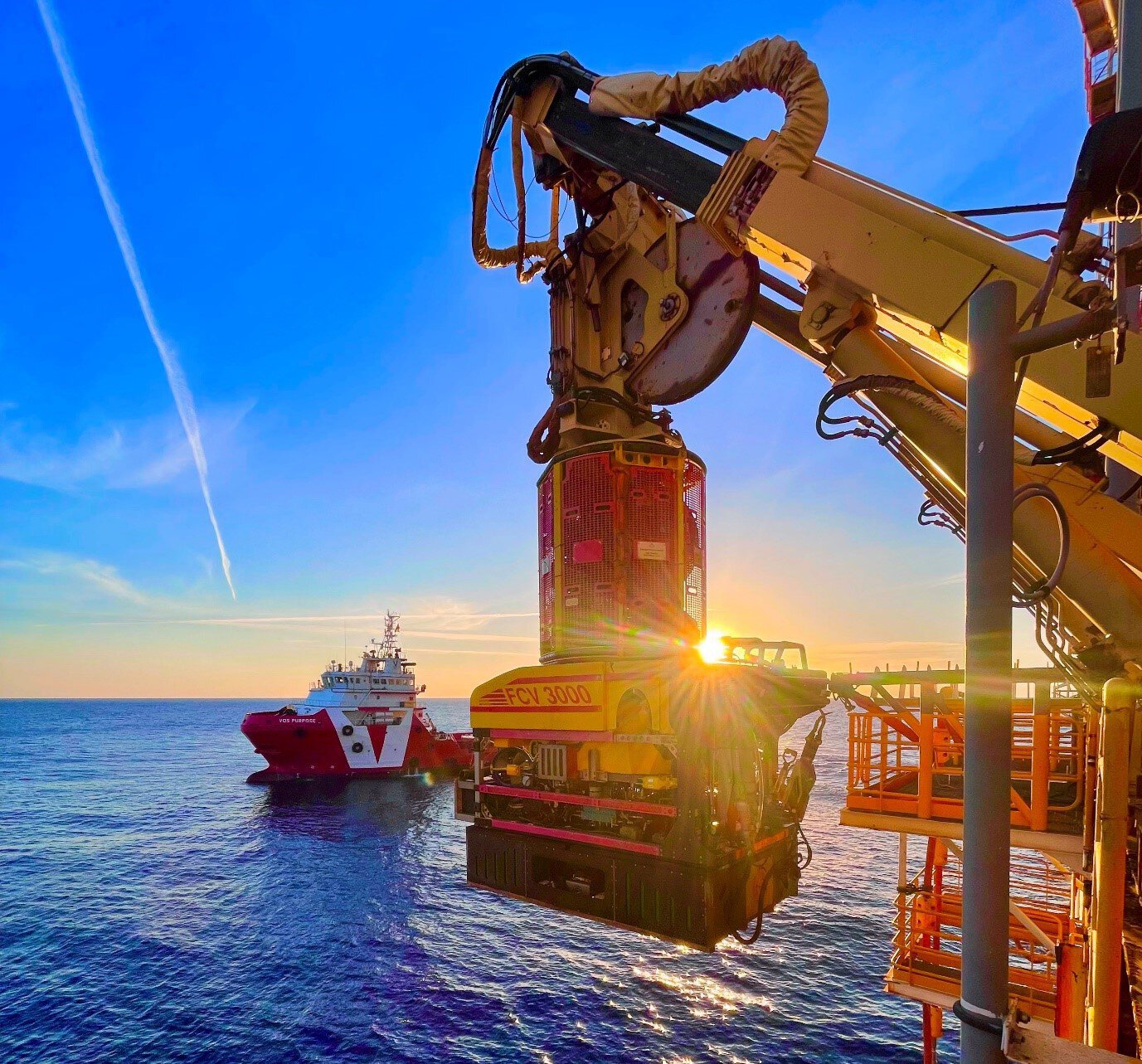Case study
Restraint solution stops flowlines slipping down continental shelf
Offshore Australia

Client
Woodside Burrup Pty Ltd
Project duration
December 2017 – March 2021
Since their installation more than a decade ago, two flowlines carrying natural gas in Australia had been gradually slipping down the slope of the continental shelf. We used our Geo-data insights to design a complex flowline restraint system that secured the flowlines for our client, Woodside.
Life cycle
Planning, feasibility, conceptual design
Design
Construction
Operations and maintenance
Decommissioning
Show full process

FCV® 3000

FCV® 3000
The FCV® 3000 is a work-class remotely operated vehicle designed to capture and deliver accurate subsea data fast and safely.
Weight of each suction anchor to hold the flowline in place
Tonnes
Woodside is Australia’s leading LNG producer. They engaged Fugro to stop the movement of two 20-inch flowlines which transport gas from a deepwater area to the Pluto processing facility. Various factors were contributing to the flowlines’ slippage: at around 20°, the slope is fairly steep; the slope is also composed of soft slippery mud; and the hot gas in the flowlines induces longitudinal thermal expansion, which reverses during well shutdowns and results in axial ‘walking’.
Intervention was needed to prevent any further displacement of the flowlines and Woodside’s priority was a cost-effective solution that would minimise production outage.
Suction anchors
We needed to analyse the soil to confirm the softness of the mud but cone penetration test (CPT) units cannot typically be installed on slopes this steep. However, we overcame this topographical challenge by deploying our in-house foundation system, which is based on a baffle skirt design that was adjusted to the slope. The subsequent CPT results confirmed that the veneer of surficial mud was extremely weak.
Next, we turned our attention to the flowlines’ restraint system, which had to limit flowline movement to 300 mm on unconsolidated soft sediments that are prone to sliding downslope. After evaluating various solutions in terms of performance, reliability and installed cost, we decided on suction anchors that were 22 m long, 4 m in diameter and weighed 80 t. We installed a pair of suction anchors to restrain each flowline, both symmetrically and securely, and carefully optimised the position of each anchor according to the complex slope geometry.
Flowline coating
The restraint system also included one friction clamp for each flowline and a rigid tether system that acted as a bridle. The clamps had to grip the flowlines securely, achieving the desired shear forces throughout the connection, but exerting too tight a grip risked damaging the flowlines’ seven-layer polypropylene coating. We factored in risks relating to coating uncertainties, plus compensation for the coating shrinking over time and expanding with temperature, and we had the pipeline coating properties tested by an independent laboratory in Singapore. We then initiated a full-scale prototype test by the clamp designer and fabricator to confirm the clamp concept and further validate the coating properties.

Suction anchor and subsea tether
Millimetre accuracy
Despite the steep and slippery slopes, the restraint system was successfully installed using a combination of load control and suction pressure under constantly maintained dynamic positioning. Thus the large-scale offshore engineering project was successfully delivered with millimetre accuracy during a global pandemic by our offshore team, supported by our Perth office.
Innovative highlight
Given the size of the anchors, we used the Southern Ocean vessel to help install the restraint system. The flowline anchors were installed to within 0.5 m of their target location and at an inclination of less than 0.8° from perfectly (plumb) vertical.
After the anchors were installed, we used our smaller Fugro Etive vessel, which was nearby delivering a separate inspection and maintenance contract on some of Woodside’s subsea infrastructure, to finalise installation of the clamps and tethers to ensure continued safe operation.
Impact
Fugro’s solution successfully arrested the movement of Woodside’s two flowlines, avoiding the significant cost and production outage associated with alternative remedial options.
Chris Eastwell, Fugro’s IRM Director for the APAC region, said: “We safely completed a highly challenging, world-class project that will help protect one of Woodside’s most important production assets well into the future.”

What we do at Fugro